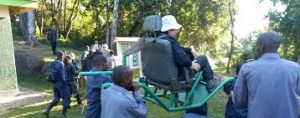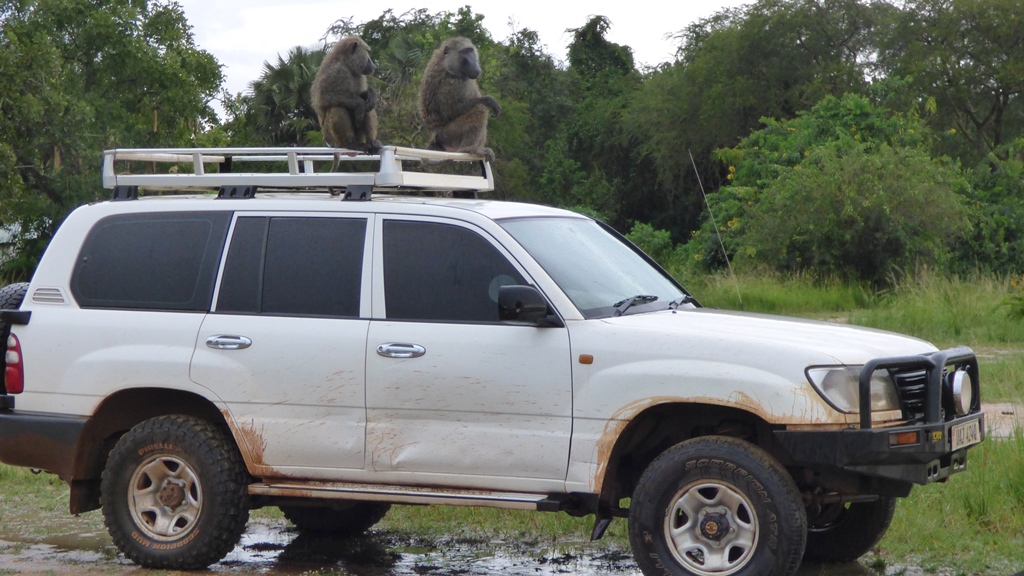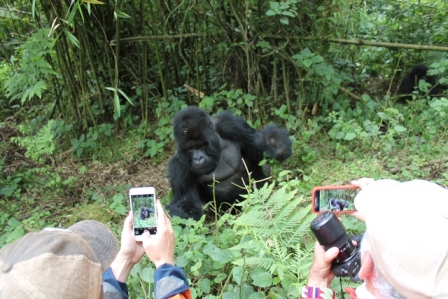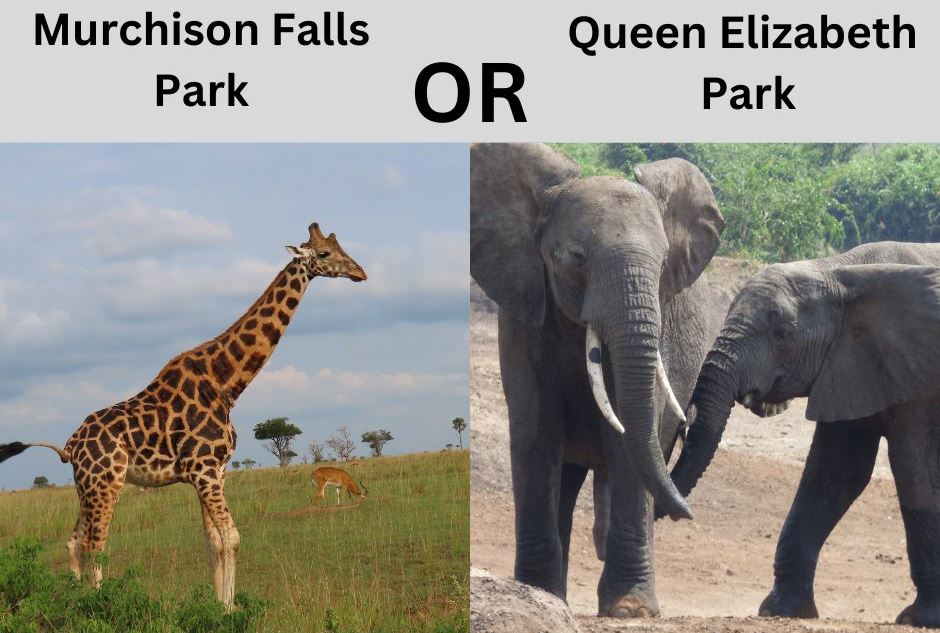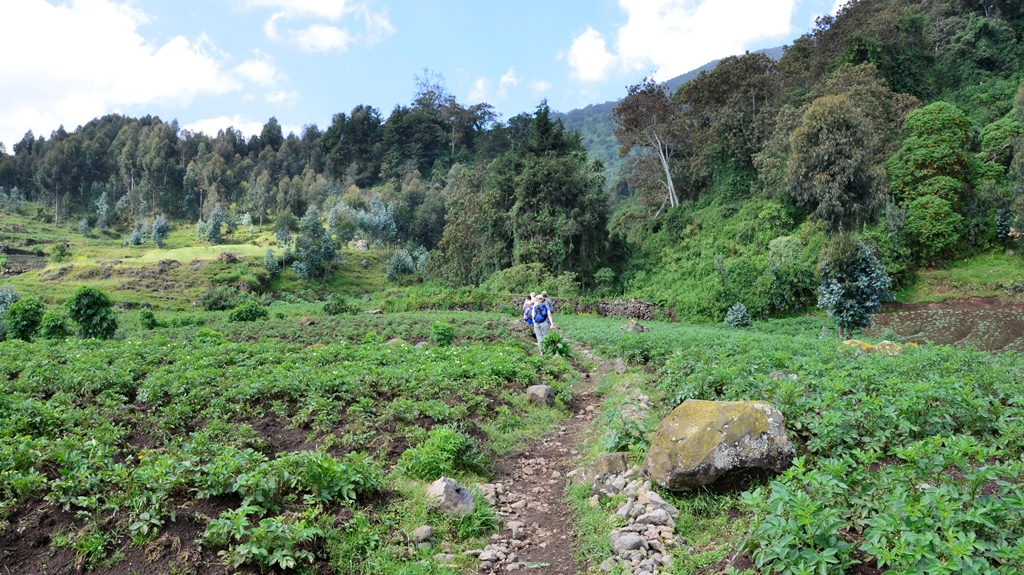March 6, 2021
How difficult or hard or challenging is the gorilla trek? Will I manage the trek? How far shall I trek to find the gorillas? How long will it take to find the gorillas? What if I sprain or injure my leg while on the trek, what happens?
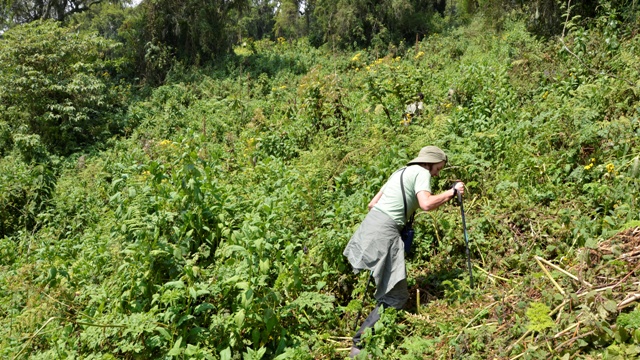 As a tour operator organizing gorilla trekking tours in Rwanda (and Uganda), these are some of the questions, or I should I call them concerns, we normally receive from clients asking to book a gorilla tour in Rwanda and Uganda. And since the mountain gorillas live in mountains (the Virunga Mountains), the level of difficult of the trek is a big concern especially for those that have no or little experience in hiking or climbing mountains.
So below I will try to explain the level of difficult you should anticipate:
The gorilla trek can be easy, moderate, difficult or even extremely difficult… It depends on; first your fitness levels 😊, and second the mood…eeh sorry, I mean the movement of the gorillas that day and their general location across the mountains. There are more than 10 habituated gorilla families in Volcanoes National Park for tracking by tourists and every morning before the trek groups of not more than 8 tourists are assigned to each habituated gorilla family.
Every gorilla family has a different location across the mountains, however the location is not static as the gorillas move, but still they do not cover a big distance & on average can cover just 1km in day under normal circumstance (though, still 1 km on a mountain is not a small distance). But under some abnormal circumstances the gorillas may travel very far, e.g. when attacked by another gorilla group or errant lone males wanting to take over the family forcefully, so the dominant male gorilla who is the leader of the family can flee his family as far away as possible.
The gorillas make new homes every day and therefore have a different location every day. The park has trackers who keep with the gorillas till they make new nests to spend the night, and so the general location of the gorillas at the start of the day is known. Alternatively, the trackers go out early in the morning and basing on where the gorillas were last seen the previous day, they track down the gorillas’ nesting location before they wake up and will stay with them as they start the day & relay the information of their movement to the park authorities at the head office. So, the park authorities have an idea of the general location of the different gorilla families and going by this the park may have an idea of how long it could take to find each family.
Going back to the allocation of the groups to tourists before the trek, the park authorities will give priority to older tourists in assigning them to gorilla families that are closer to the base of the mountain or may be easy to find.
Therefore, as an individual who may be worried about your fitness, you can request to be allocated an ‘easier’ group.
I deliberately put ‘easier’ in quotes because, as I did say, the gorillas do not have a static location, so what started out as an easy trek can fast turn into a hard trek depending on how the gorillas decide to move. They can move up the mountain so you have to climb to catch up or keep moving along the sides or even come down closer to the base and near to the trailhead and could be found in a matter of minutes.
On the other hand, the younger and more adventurous tourists can request for a harder trek. Tip: if you are the extreme adventurous type, in Rwanda ask for Pablo, notoriously hard-to-track group in Mt. Karisimbi (tallest of the Virunga volcanoes) but be ready to come back from the mountains at night fall 😊
As a tour operator organizing gorilla trekking tours in Rwanda (and Uganda), these are some of the questions, or I should I call them concerns, we normally receive from clients asking to book a gorilla tour in Rwanda and Uganda. And since the mountain gorillas live in mountains (the Virunga Mountains), the level of difficult of the trek is a big concern especially for those that have no or little experience in hiking or climbing mountains.
So below I will try to explain the level of difficult you should anticipate:
The gorilla trek can be easy, moderate, difficult or even extremely difficult… It depends on; first your fitness levels 😊, and second the mood…eeh sorry, I mean the movement of the gorillas that day and their general location across the mountains. There are more than 10 habituated gorilla families in Volcanoes National Park for tracking by tourists and every morning before the trek groups of not more than 8 tourists are assigned to each habituated gorilla family.
Every gorilla family has a different location across the mountains, however the location is not static as the gorillas move, but still they do not cover a big distance & on average can cover just 1km in day under normal circumstance (though, still 1 km on a mountain is not a small distance). But under some abnormal circumstances the gorillas may travel very far, e.g. when attacked by another gorilla group or errant lone males wanting to take over the family forcefully, so the dominant male gorilla who is the leader of the family can flee his family as far away as possible.
The gorillas make new homes every day and therefore have a different location every day. The park has trackers who keep with the gorillas till they make new nests to spend the night, and so the general location of the gorillas at the start of the day is known. Alternatively, the trackers go out early in the morning and basing on where the gorillas were last seen the previous day, they track down the gorillas’ nesting location before they wake up and will stay with them as they start the day & relay the information of their movement to the park authorities at the head office. So, the park authorities have an idea of the general location of the different gorilla families and going by this the park may have an idea of how long it could take to find each family.
Going back to the allocation of the groups to tourists before the trek, the park authorities will give priority to older tourists in assigning them to gorilla families that are closer to the base of the mountain or may be easy to find.
Therefore, as an individual who may be worried about your fitness, you can request to be allocated an ‘easier’ group.
I deliberately put ‘easier’ in quotes because, as I did say, the gorillas do not have a static location, so what started out as an easy trek can fast turn into a hard trek depending on how the gorillas decide to move. They can move up the mountain so you have to climb to catch up or keep moving along the sides or even come down closer to the base and near to the trailhead and could be found in a matter of minutes.
On the other hand, the younger and more adventurous tourists can request for a harder trek. Tip: if you are the extreme adventurous type, in Rwanda ask for Pablo, notoriously hard-to-track group in Mt. Karisimbi (tallest of the Virunga volcanoes) but be ready to come back from the mountains at night fall 😊
PORTERS HELP!!
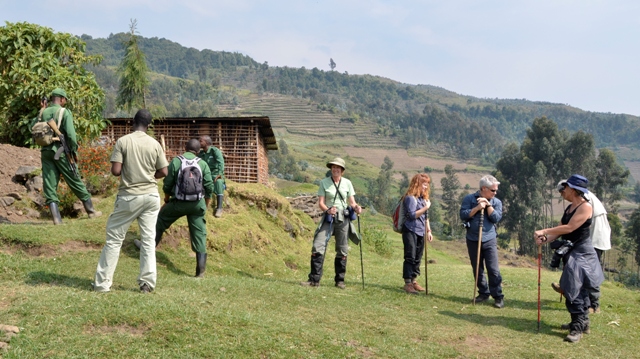 Porters are available for hire at $10 and you are encouraged to take at least one even when you feel energetic and fit enough because the altitude could get the better of you. Porters will carry your daypack and other items so that you are as light as possible. Porters can also give you a push or pull in certain situations.
Porters are available for hire at $10 and you are encouraged to take at least one even when you feel energetic and fit enough because the altitude could get the better of you. Porters will carry your daypack and other items so that you are as light as possible. Porters can also give you a push or pull in certain situations.
What happens if you sprain or injure your leg during the trek??
Well, this is possible and happens sometimes, unfortunately. Since you are trekking on uneven mountain terrain you can miss a step or slide and strain an ankle. When this happens, the park cannot give up on you. A stretcher shall be improvised using tree branches and you shall be carried by able bodied porters for the rest of the trek. If however before gorilla tracking you feel that you are in no shape to attempt trekking even one meter, you are still not left out as you can request for this specialized stretcher that you sit on comfortably and are carried to and from the gorillas. It however costs an extra fee and is booked in advance.